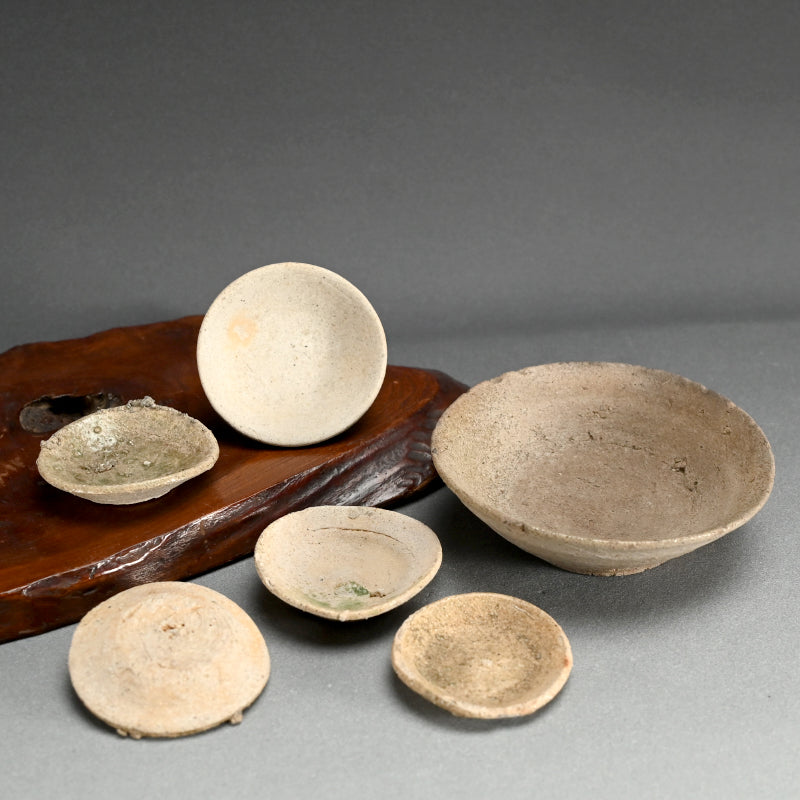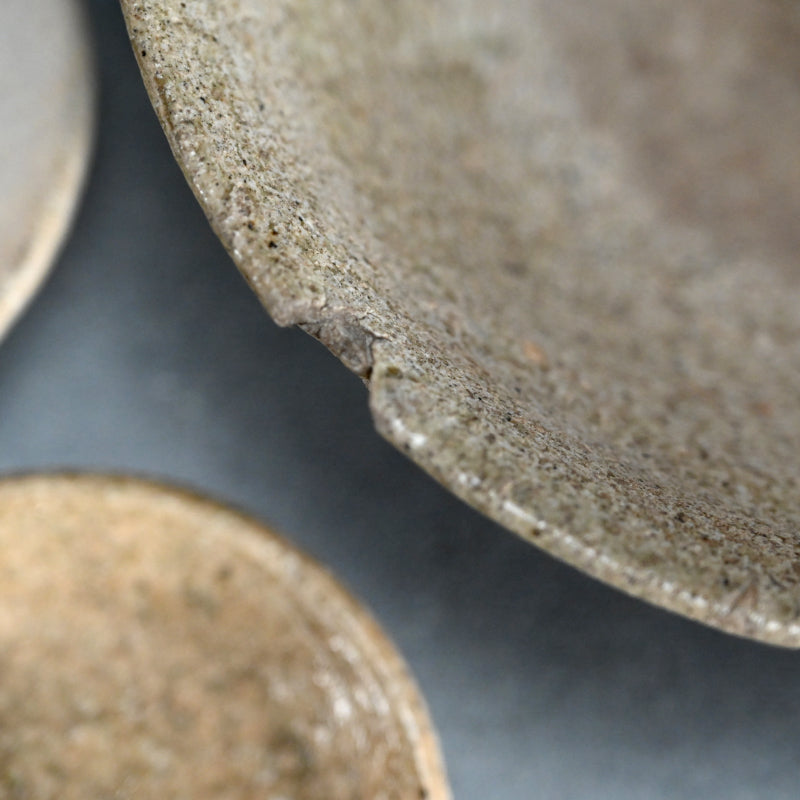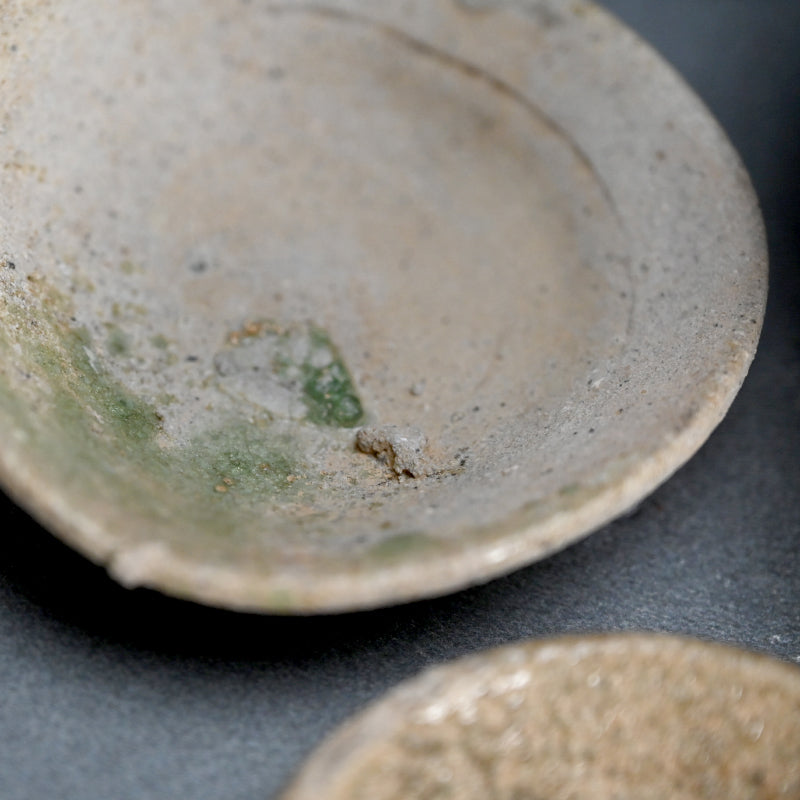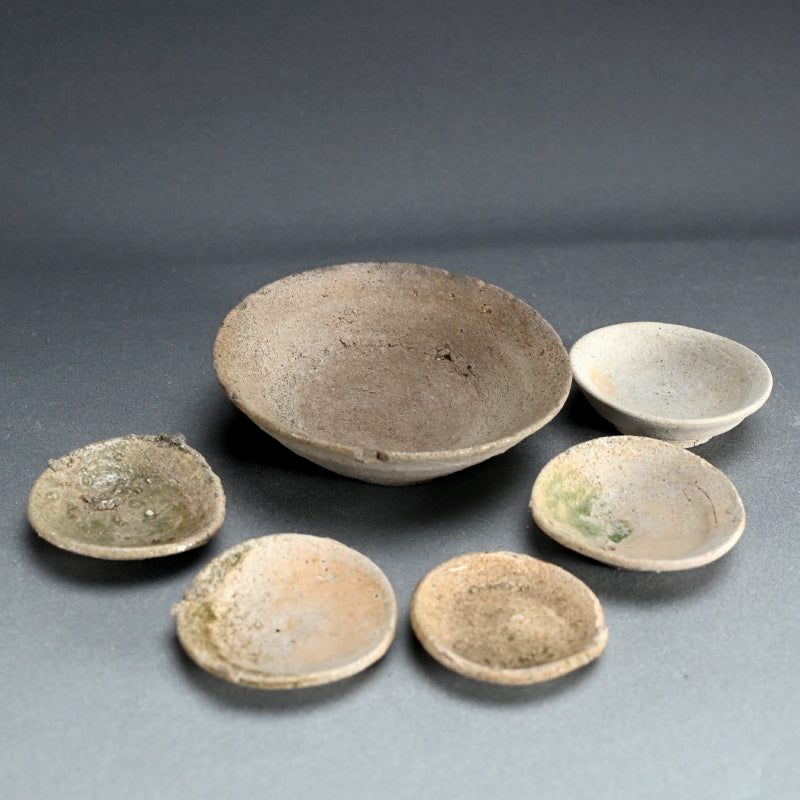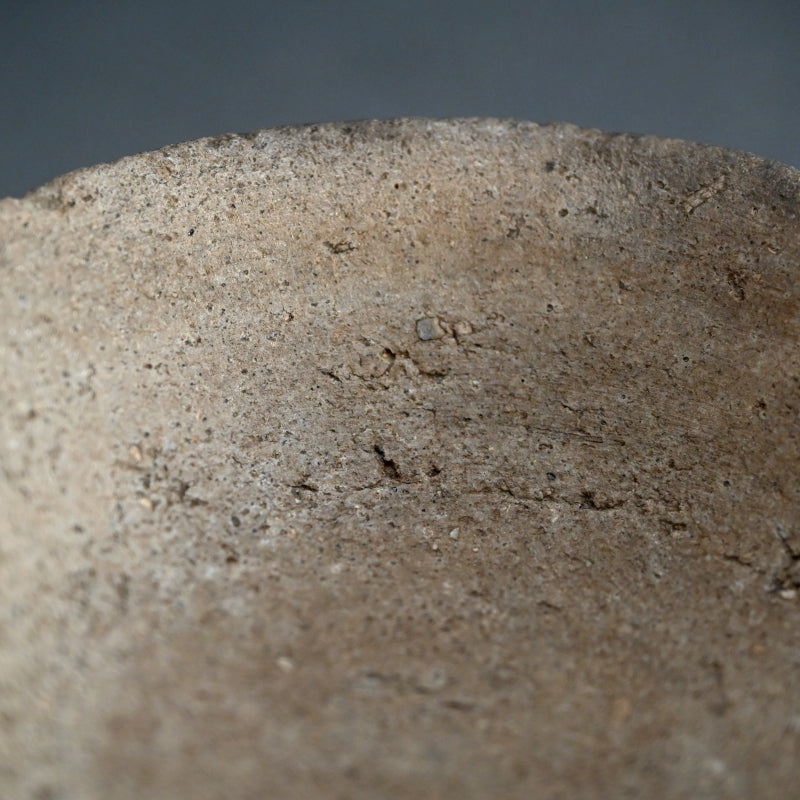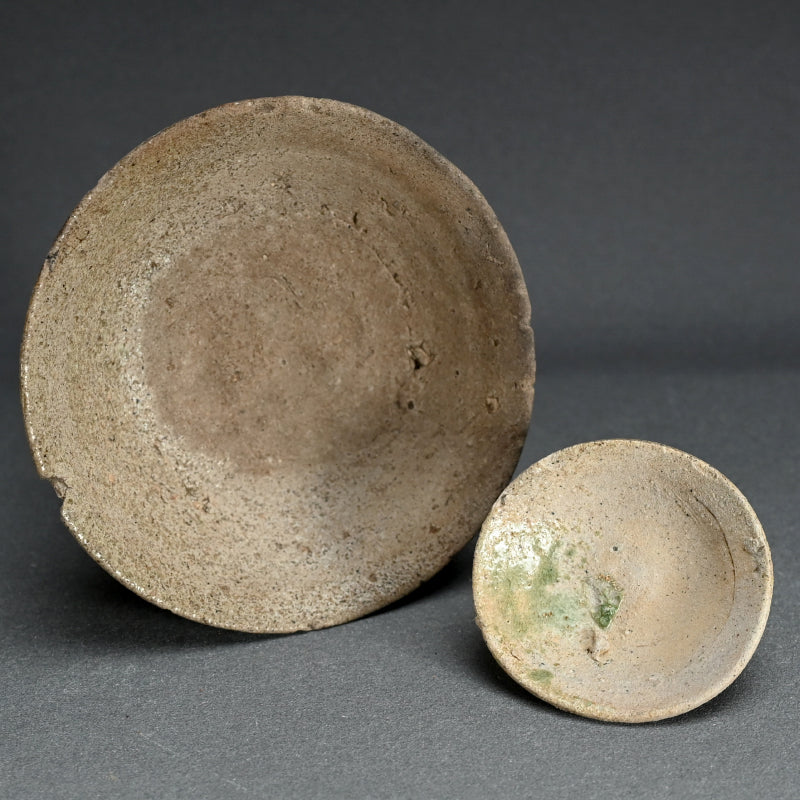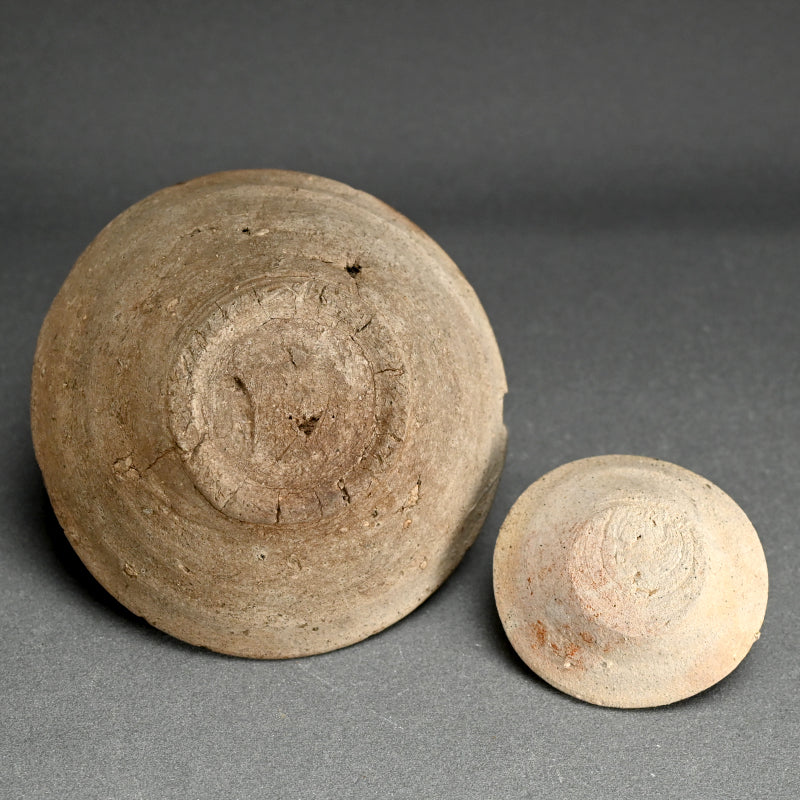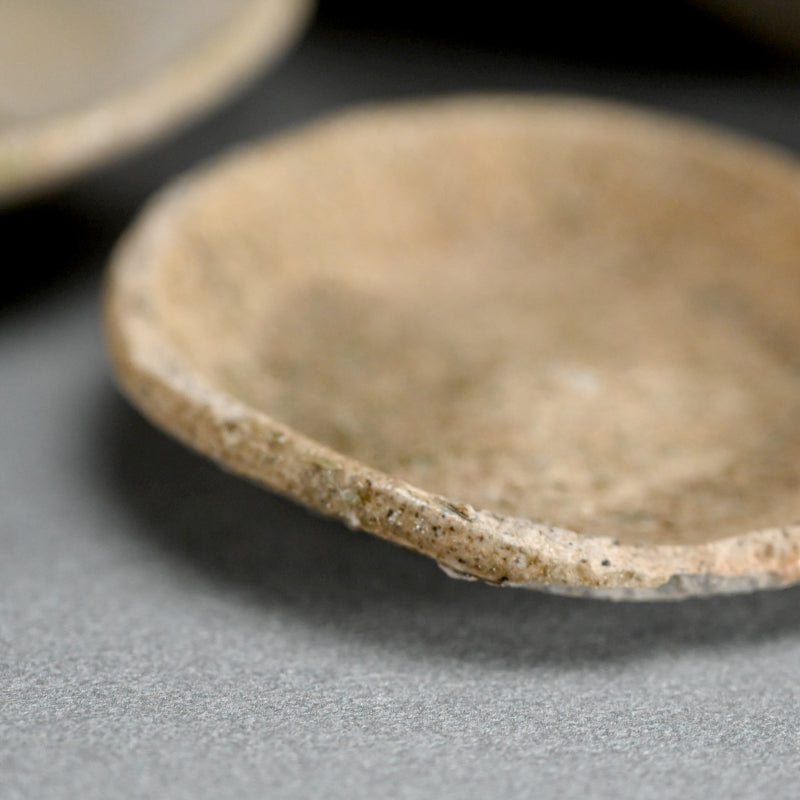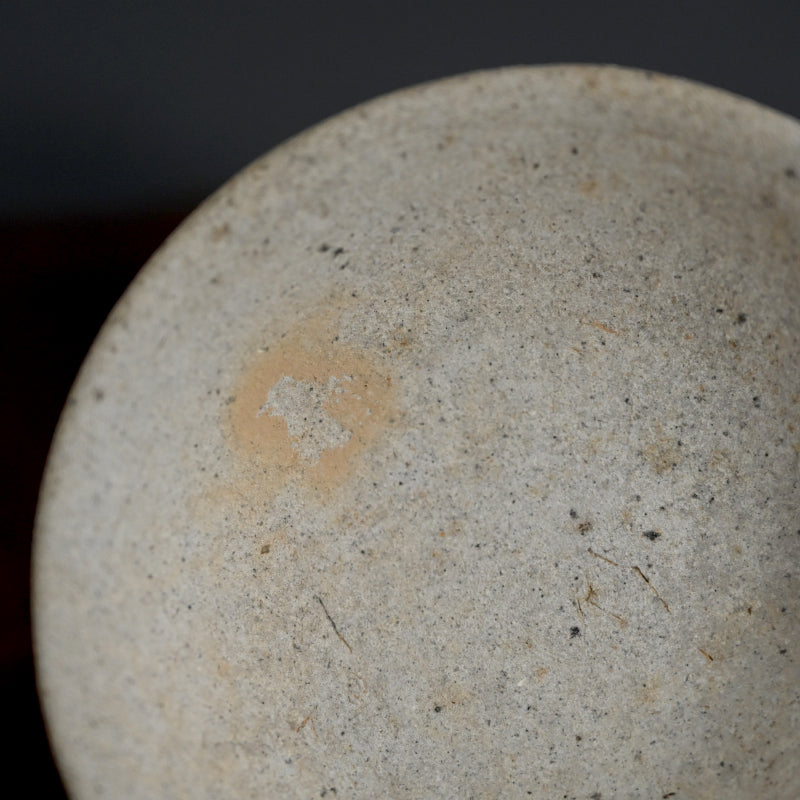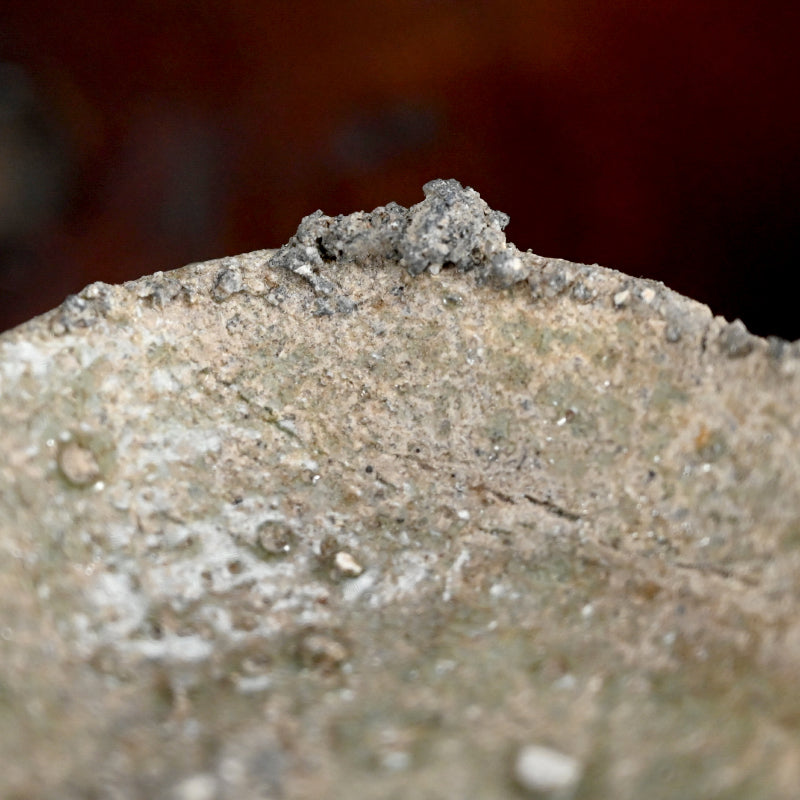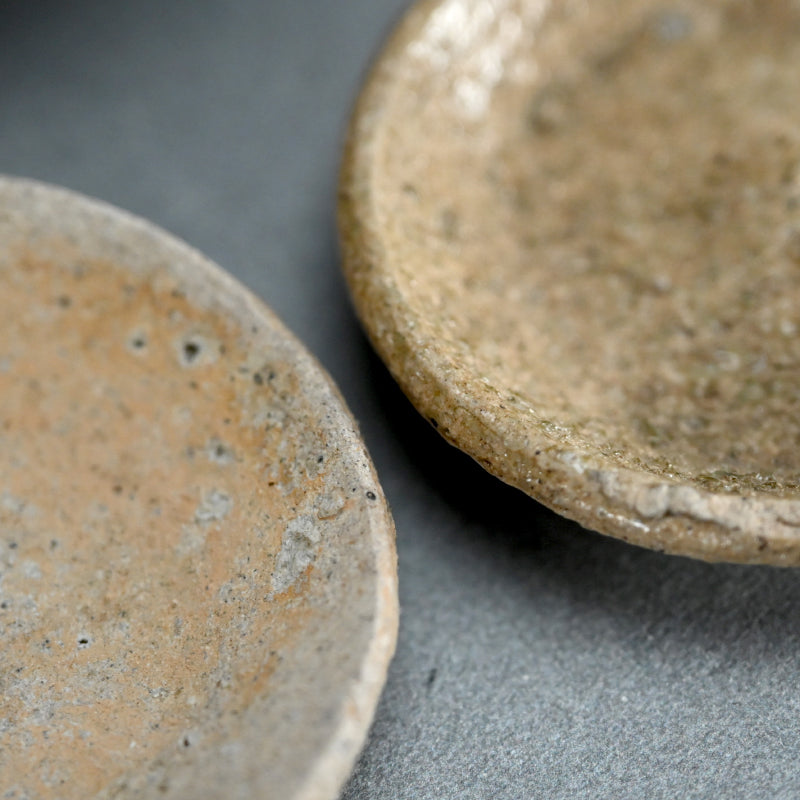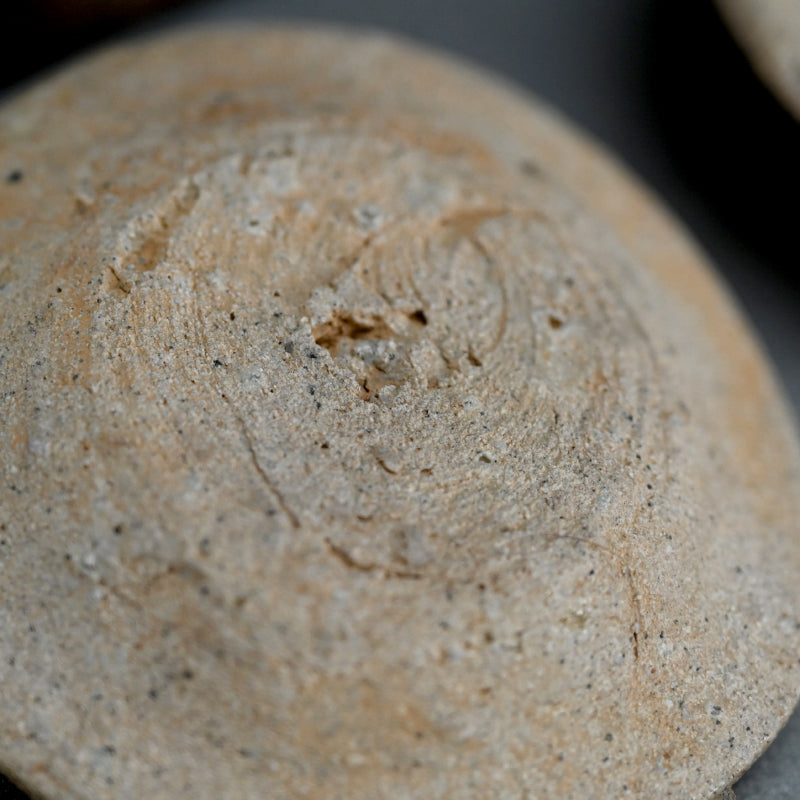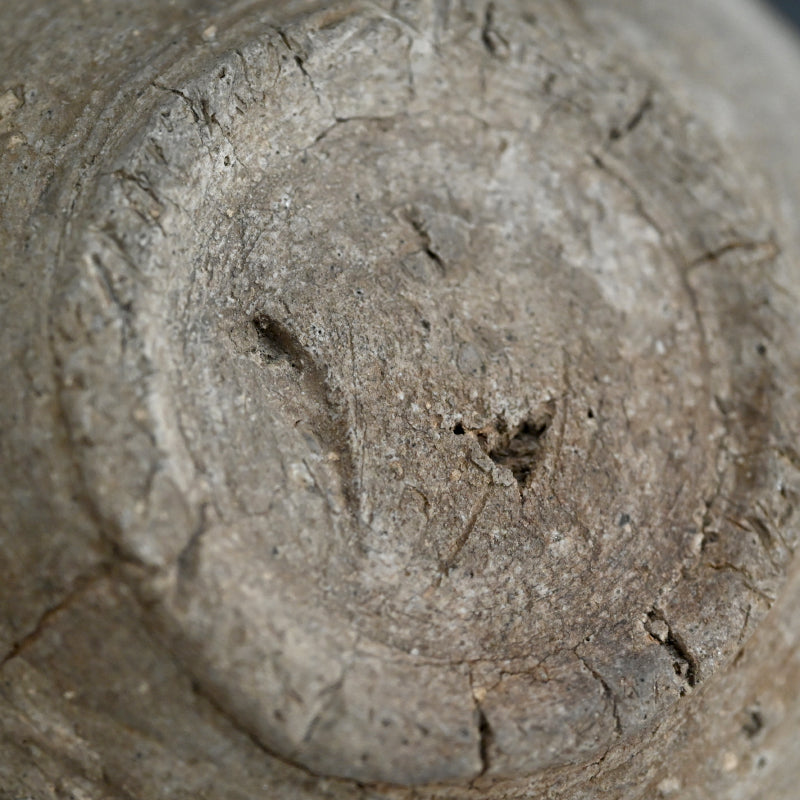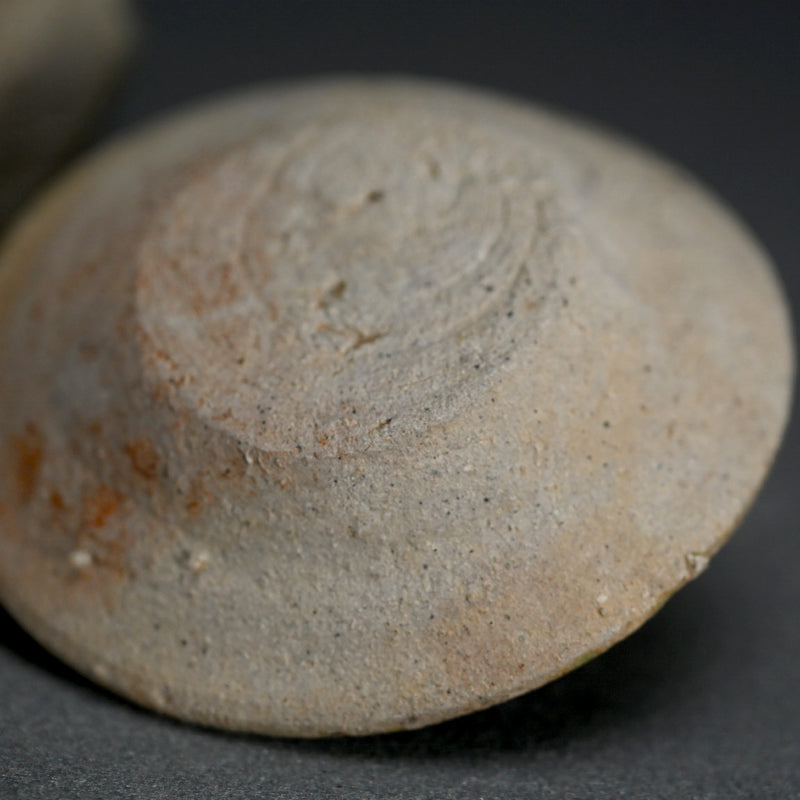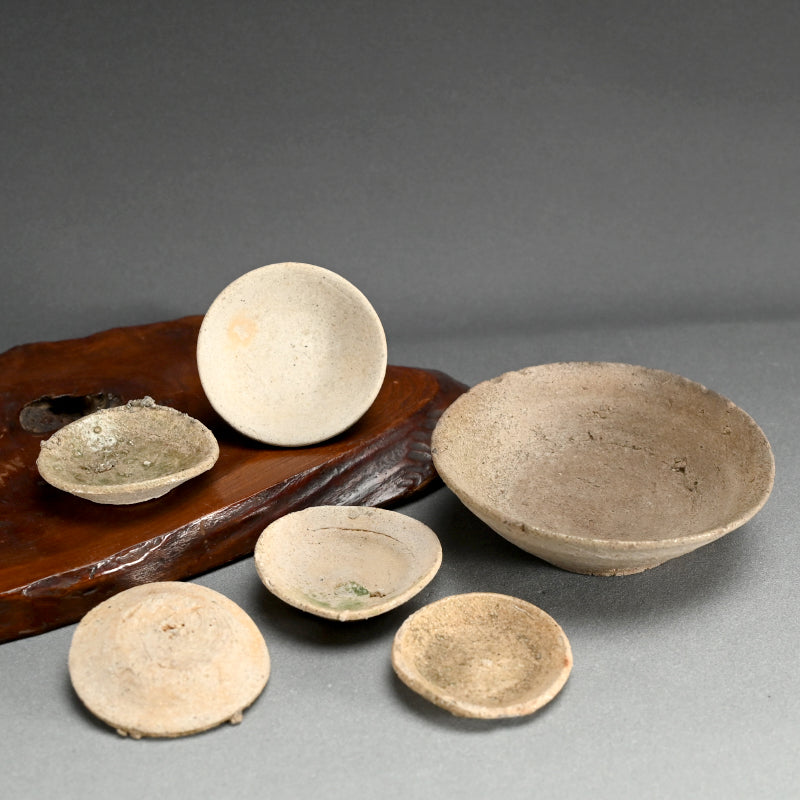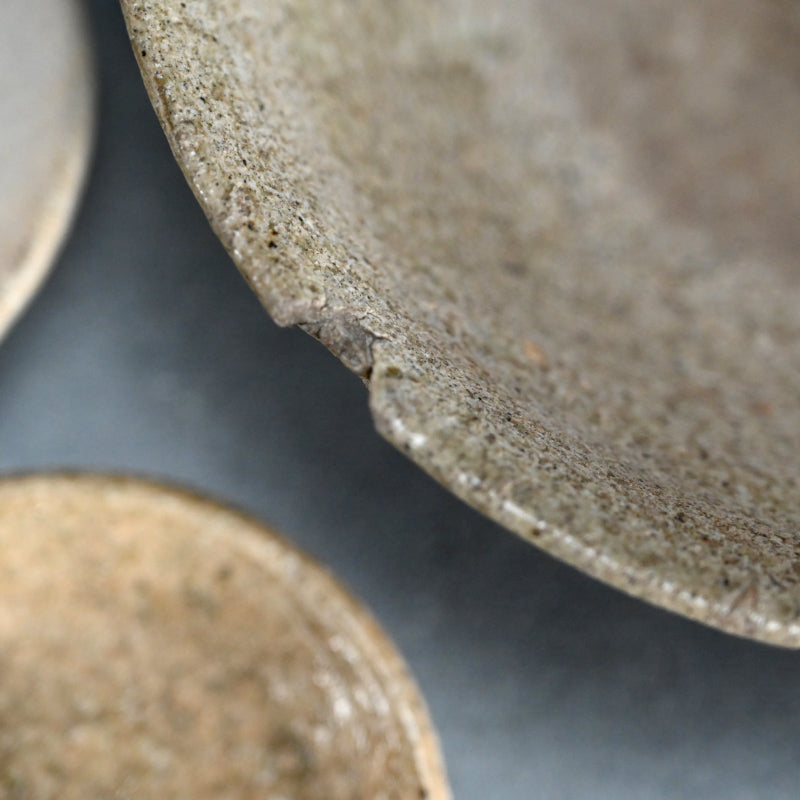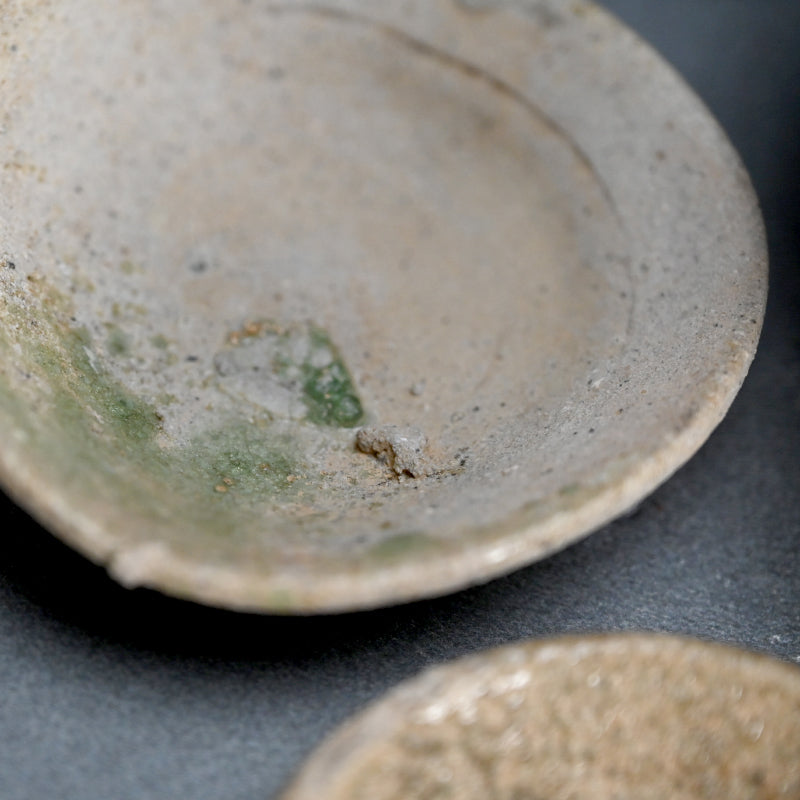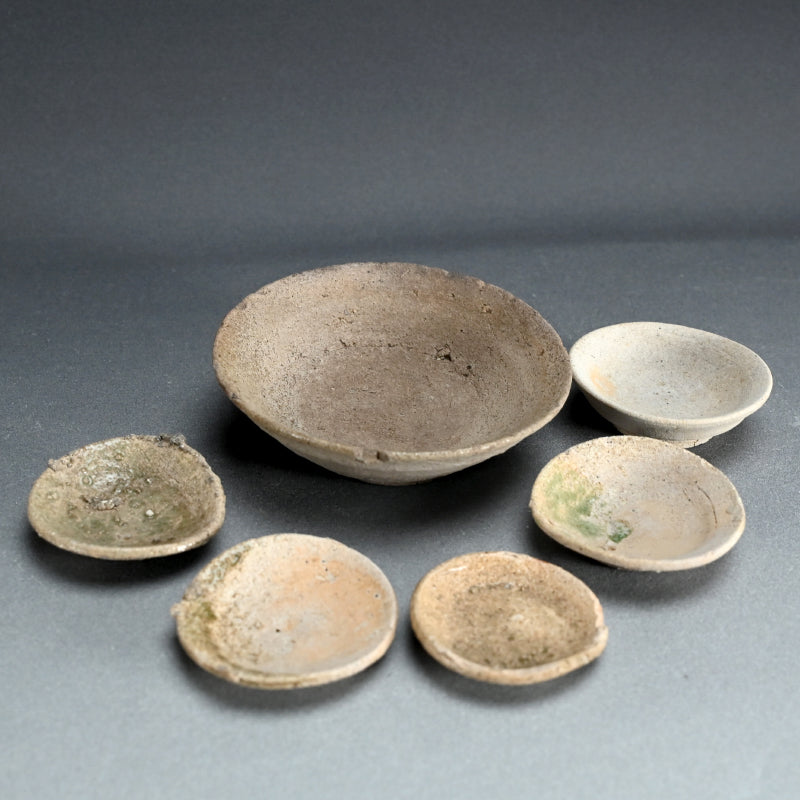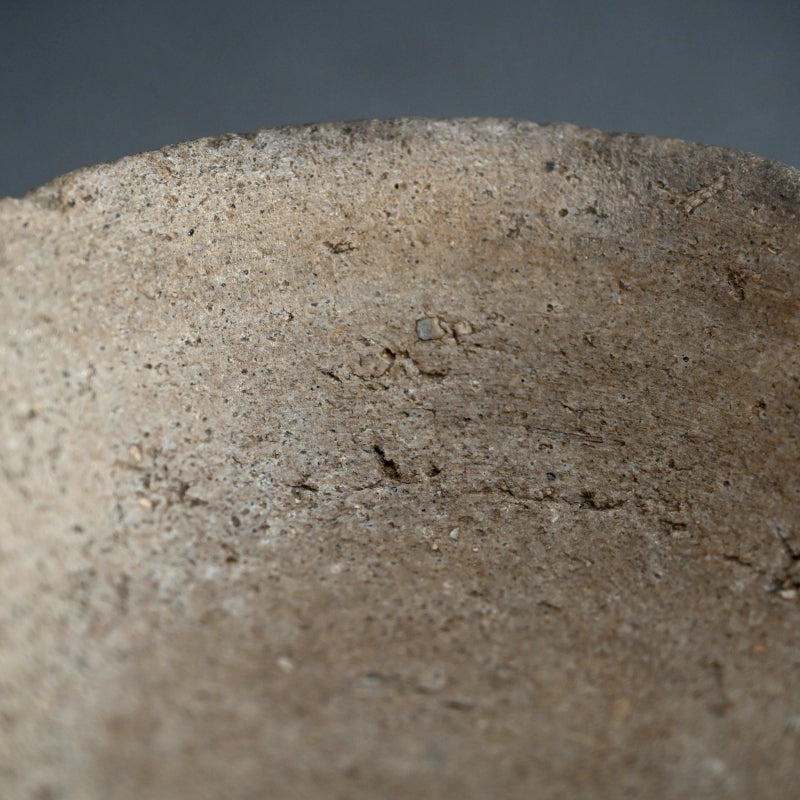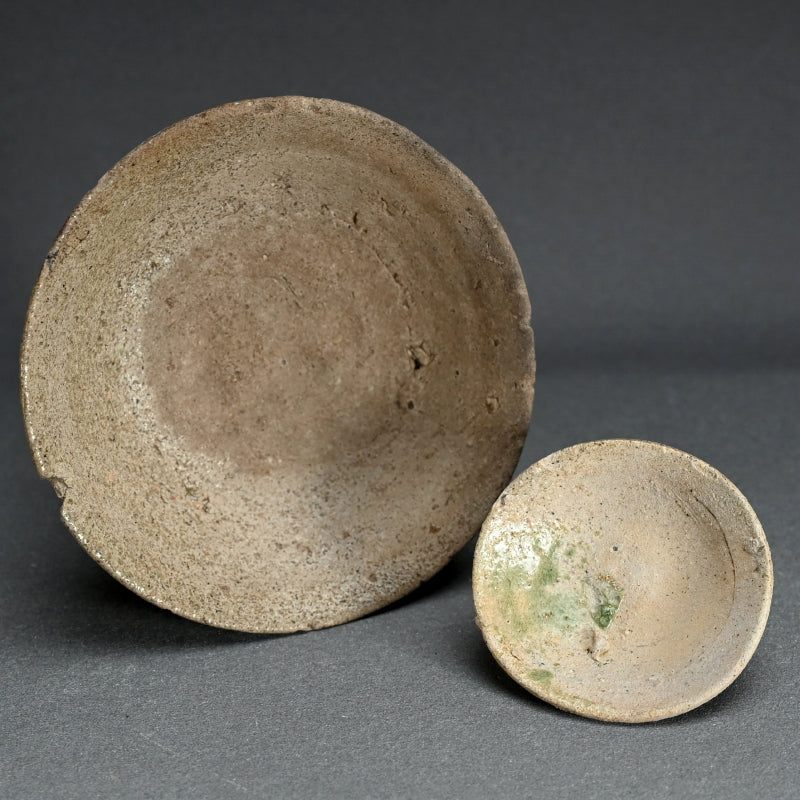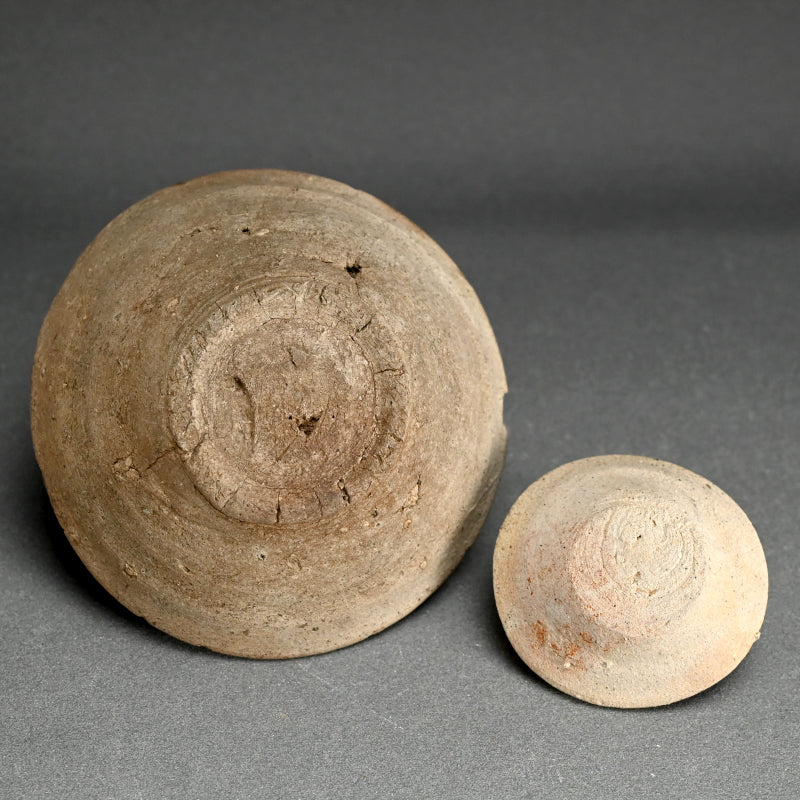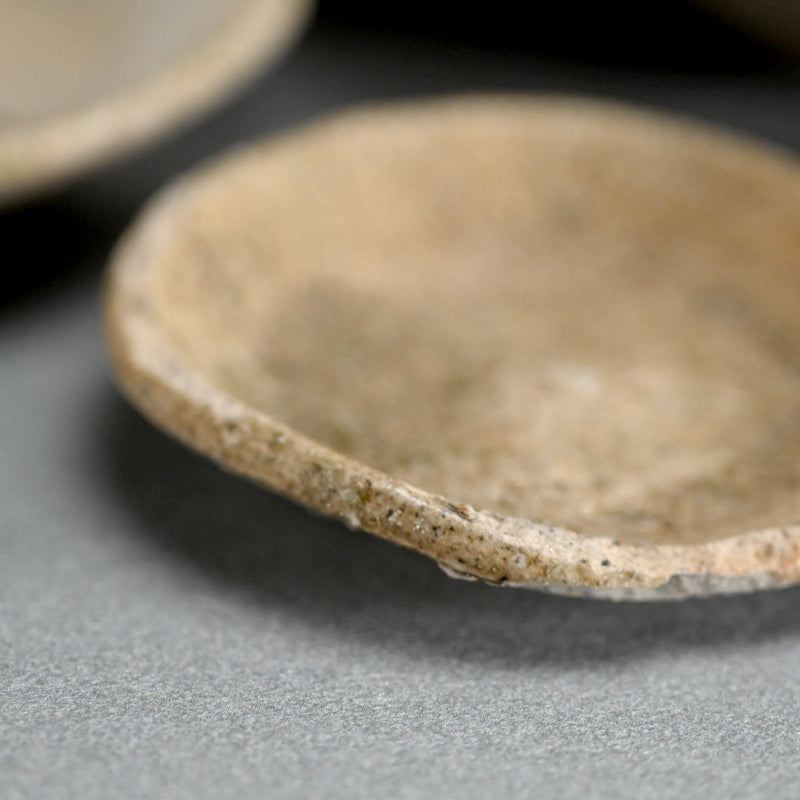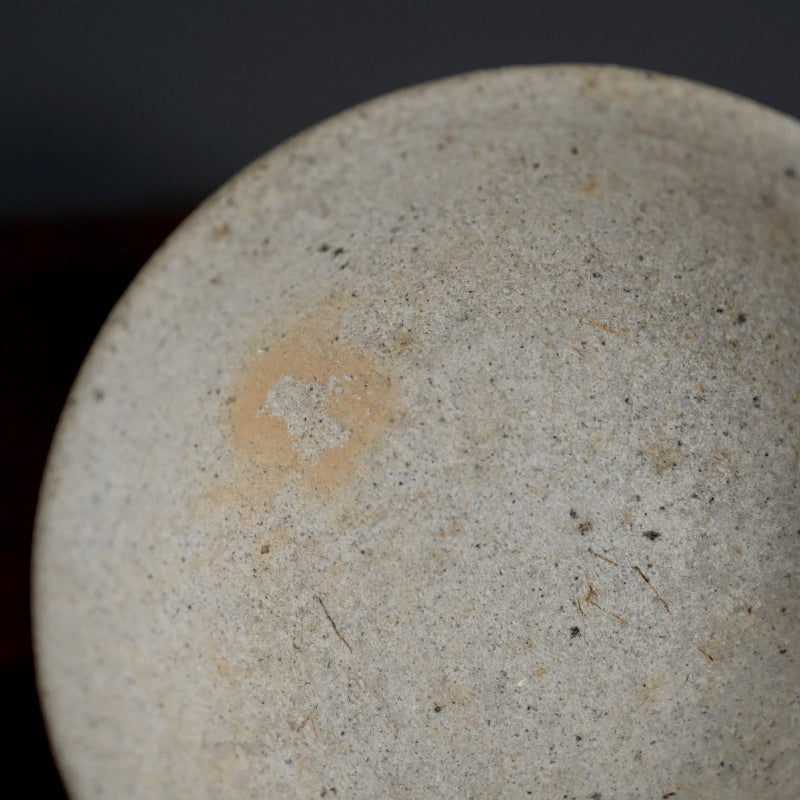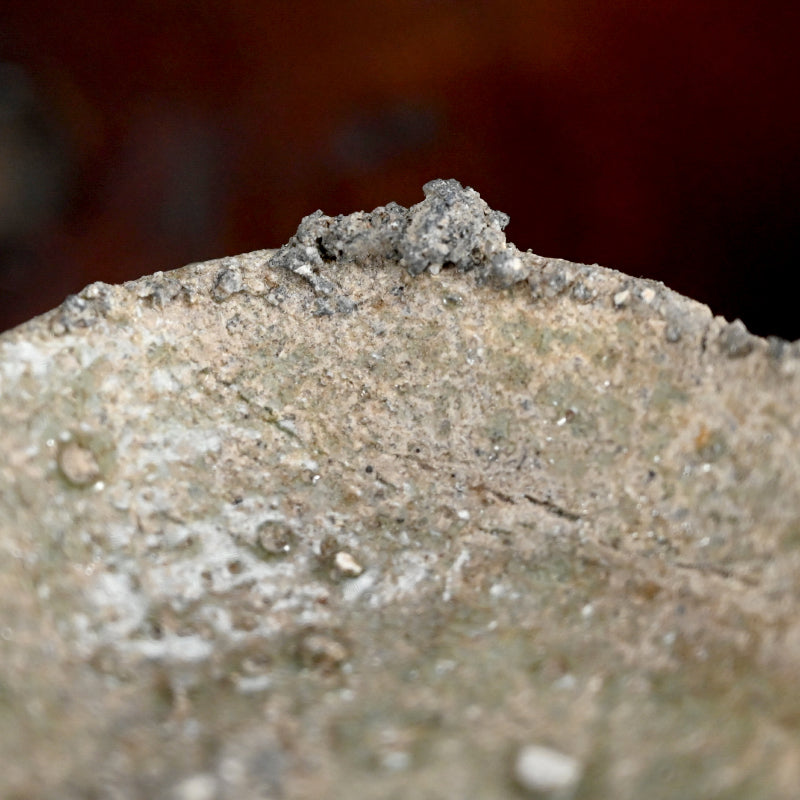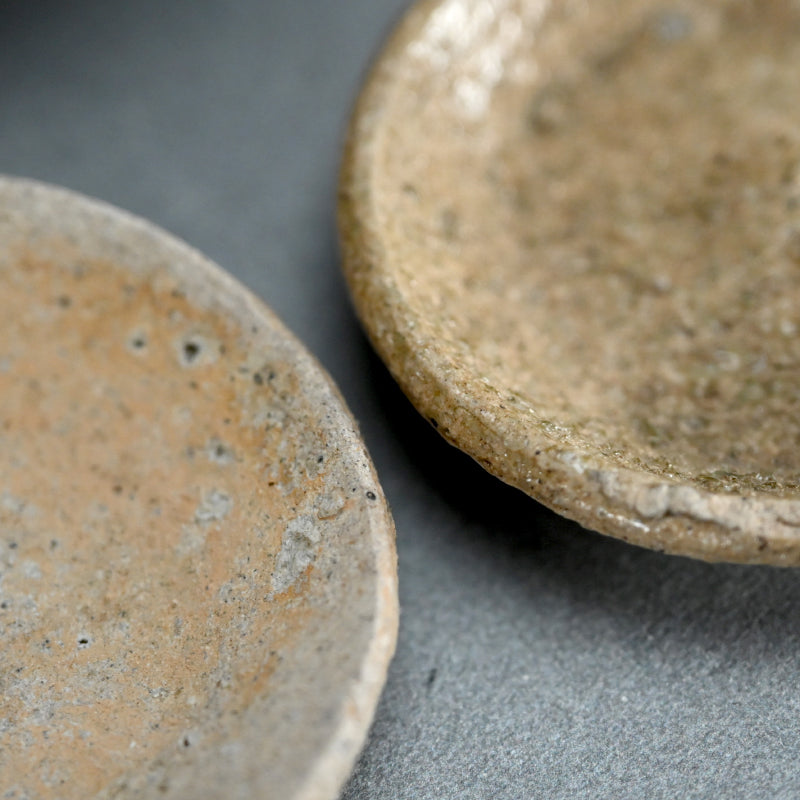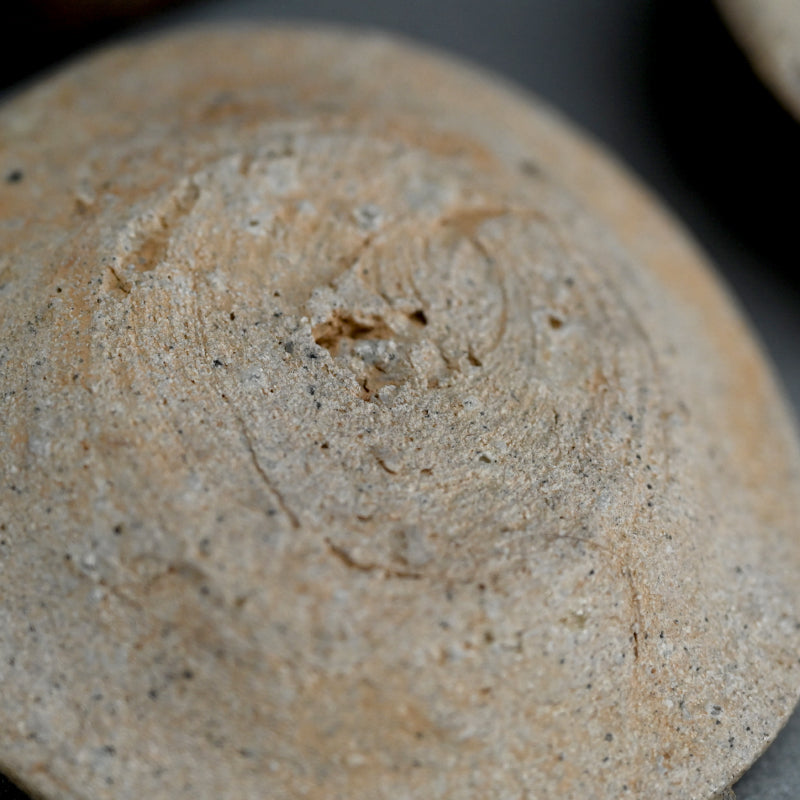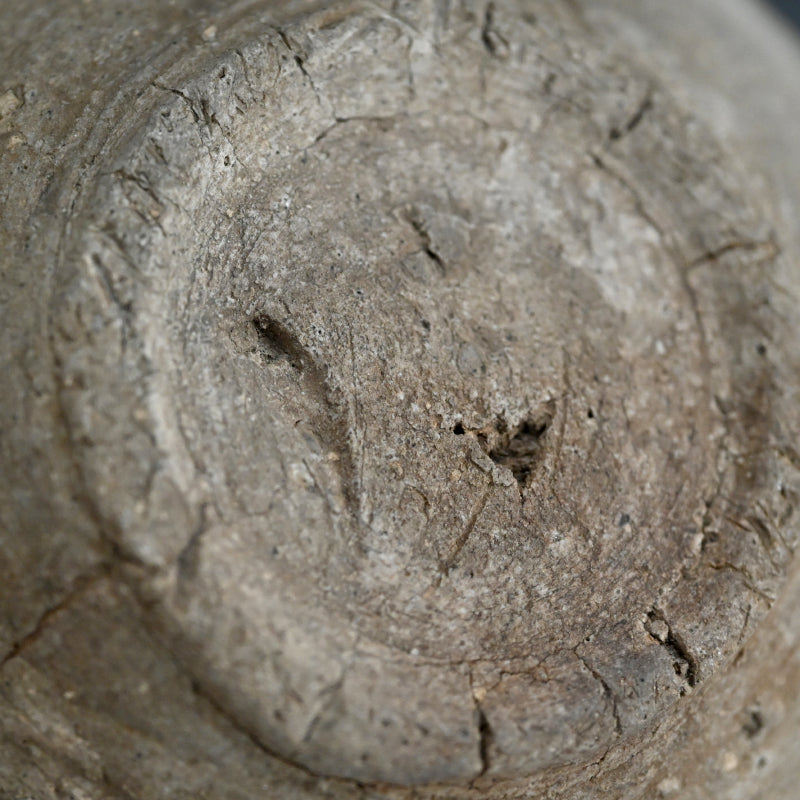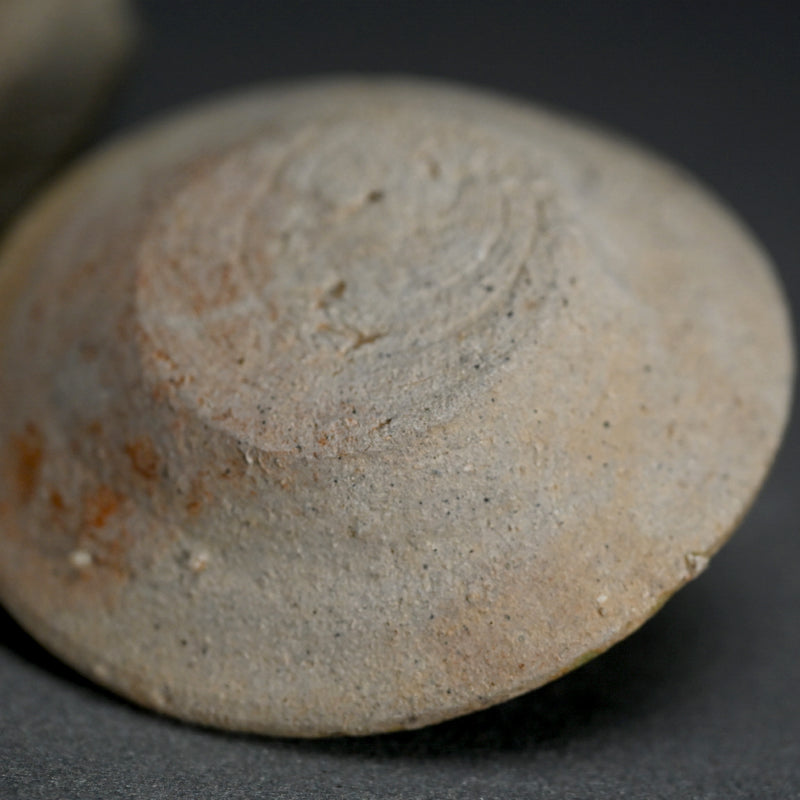1
/
of
14
Yama Chawan & 5 small plates, Heian to Kamakura period
Yama Chawan & 5 small plates, Heian to Kamakura period
Item Code: KN033
Regular price
¥77,500 JPY
Regular price
Sale price
¥77,500 JPY
Unit price
/
per
Tax included.
Couldn't load pickup availability
A set of five small dishes and one larger bowl dating from the late Heian to Kamakura periods (12th -14th centuries) from the Seto region in central Japan. The bowl, called Yamajawan or Yama Chawan, is a soft grey color and measures roughly 16 cm (over six inches) diameter, 5.5 cm (2 inches) tall. The plates vary from pale white raw clay to ash spattered yellow and are 7.5~9.5 cm (3-less than 4 inches) diameter.
Yama-chawan is a generic term for various types of unglazed Japanese tableware produced in vast quantity from the late Heian (794–1185) to Muromachi period (1333–1568), mainly in the Tōkai region (Aichi and Gifu prefectures) of central Japan. At the beginning of the era ritual vessels and storage jars were the common pottery, but increased production made for greater availability resulting in demand from lower classes of society for pottery. This resulted in a shift away from jars to tableware.
Production of Yama chawan began with the dissemination of wealth to military families and landowners at the end of the Heian period, and lasted through the early Muromachi era, reaching its peak in the Kamakura and Nanbokucho periods (1185-1392).
By the mid-Kamakura era, great volumes of yama-chawan were being fired. Fused, broken or damaged works would have been discarded about the kiln. As well, the kilns, were unstable and unpredictable, and often collapsed. This made for a small volume of pottery coming available from excavations in the early 20th century, when there was a great deal of research into the revival of ancient techniques.
Yama-chawan is a generic term for various types of unglazed Japanese tableware produced in vast quantity from the late Heian (794–1185) to Muromachi period (1333–1568), mainly in the Tōkai region (Aichi and Gifu prefectures) of central Japan. At the beginning of the era ritual vessels and storage jars were the common pottery, but increased production made for greater availability resulting in demand from lower classes of society for pottery. This resulted in a shift away from jars to tableware.
Production of Yama chawan began with the dissemination of wealth to military families and landowners at the end of the Heian period, and lasted through the early Muromachi era, reaching its peak in the Kamakura and Nanbokucho periods (1185-1392).
By the mid-Kamakura era, great volumes of yama-chawan were being fired. Fused, broken or damaged works would have been discarded about the kiln. As well, the kilns, were unstable and unpredictable, and often collapsed. This made for a small volume of pottery coming available from excavations in the early 20th century, when there was a great deal of research into the revival of ancient techniques.
Share
